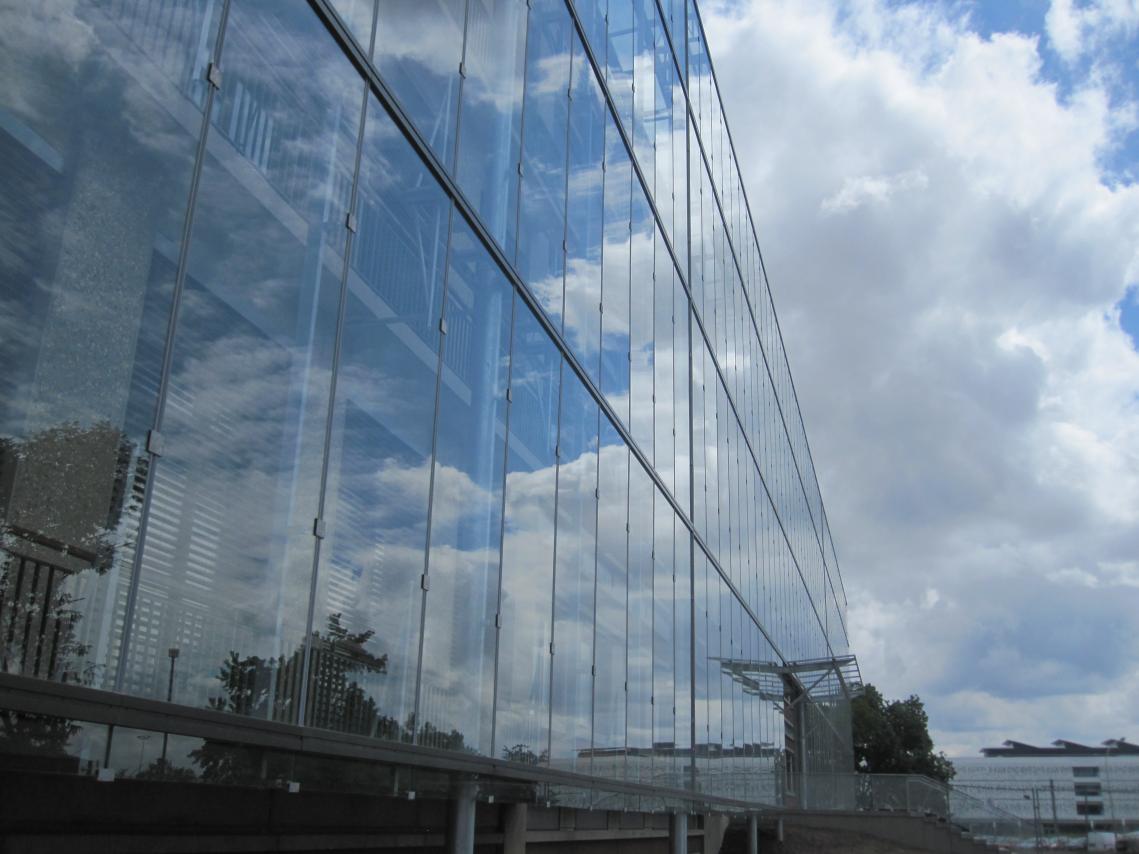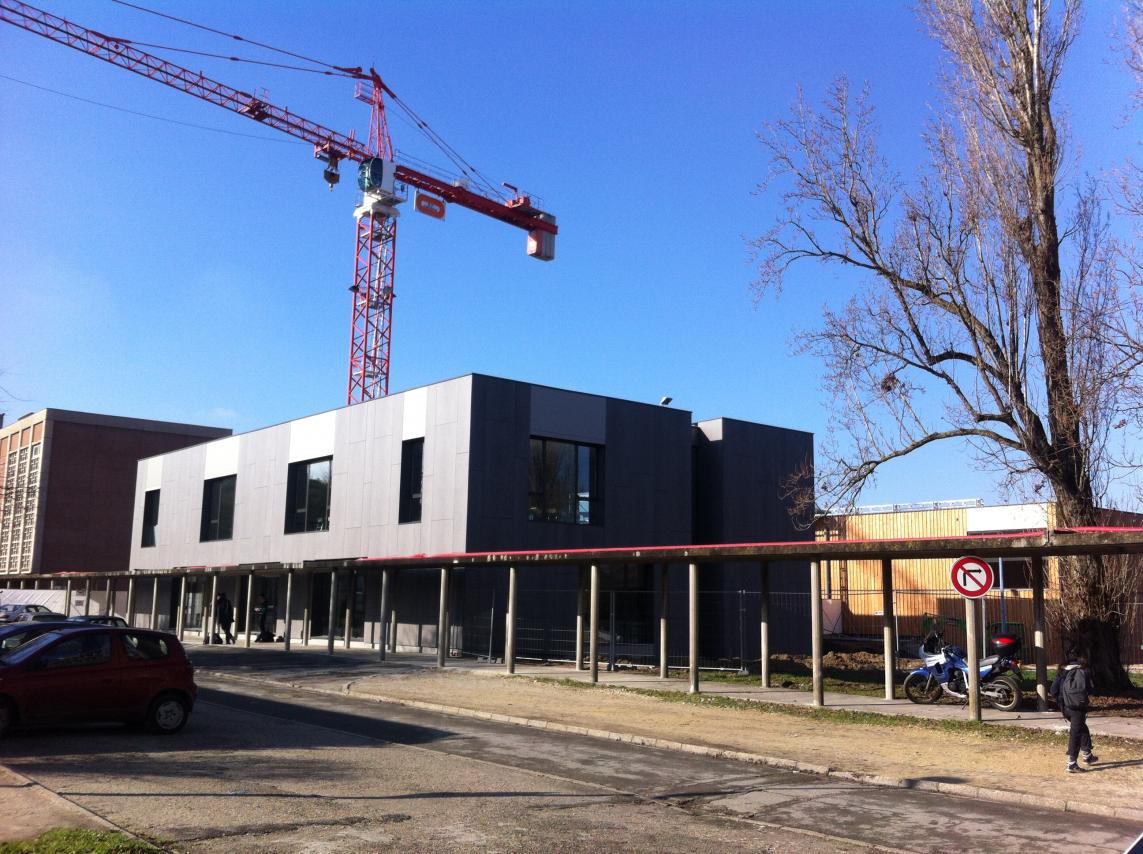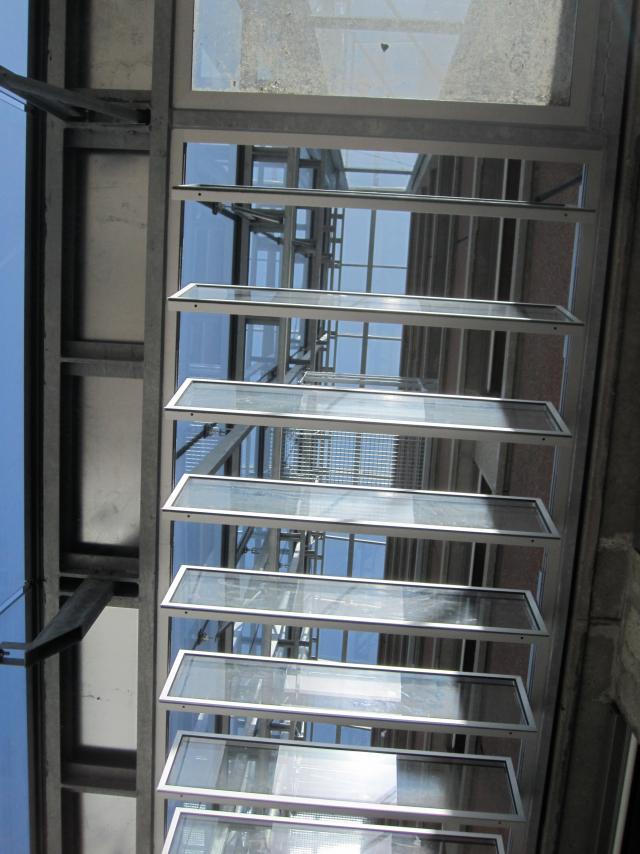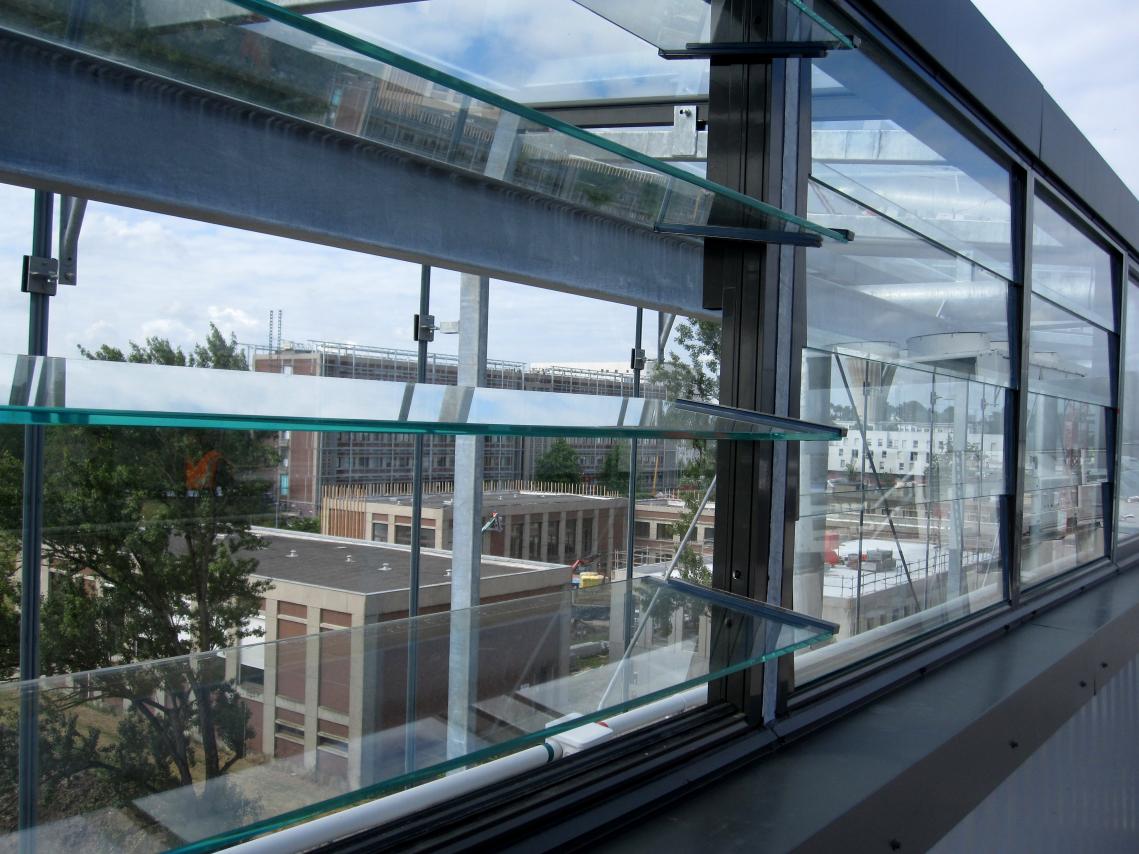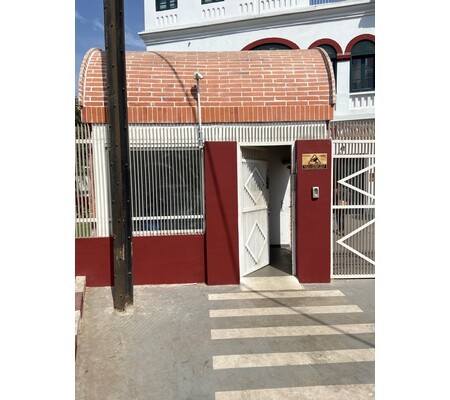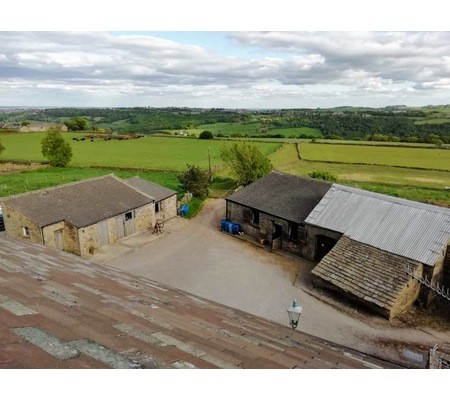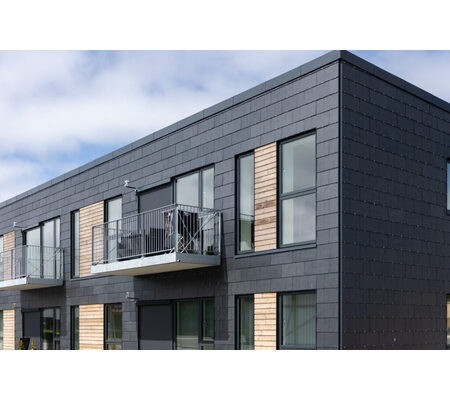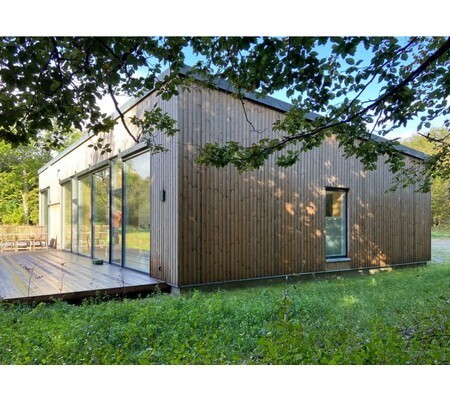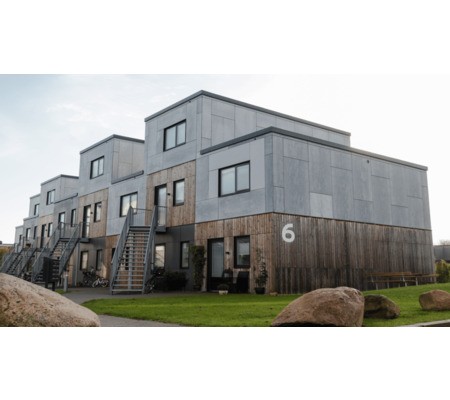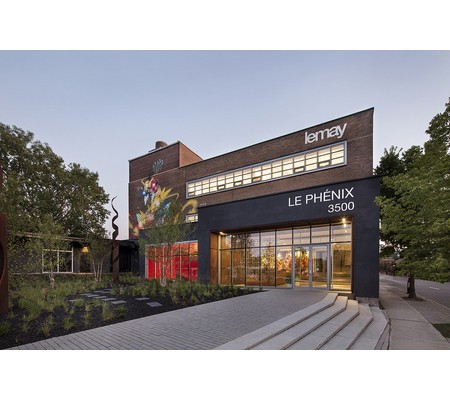Scientific University of Bordeaux
Last modified by the author on 23/06/2015 - 16:57
Extension + refurbishment
- Building Type : School, college, university
- Construction Year : 1961
- Delivery year : 2015
- Address 1 - street : Cours de la libération 33400 BORDEAUX, France
- Climate zone : [Cfc] Marine Cool Winter & summer- Mild with no dry season.
- Net Floor Area : 87 000 m2
- Construction/refurbishment cost : 95 000 000 €
- Number of Pupil : 13 000 Pupil
- Cost/m2 : 1091.95 €/m2
-
Primary energy need
39 kWhep/m2.an
(Calculation method : RT 2005 )
As part of the renovation project undertaken on the Bordeaux University campus, design, construction and operational group develops a bioclimatic double skin for the facades of six buildings. This operation, conducted by SRIA (Real state and Development Company) aims the rehabilitation and renovation of existing buildings. This results in a contract between SRIA and a group of an energy performance commitment for heating consumption. Moreover, buildings are designed to obtain: Low consumption building certification (BBC label -Effinergie renovation) and Non-Residential Building HQE certification.
The agency "Franck Boutté consultants" leads specific studies on energy and comfort related to these bioclimatic facades. It was accompanied, by the leader of DV Construction group, Quille construction and a delegate of the general contractor, the agency "AAUPaul Chemetov".
The Campus of the University of Bordeaux presents a homogeneous heritage. Its local colors as well as its supporting structure. The first intention was to maintain view to strengthening the urban, architectural and identity link between buildings spread over almost 2km. This identity and coherent approach is essential to initiate a dynamic and provide a new coherence to life Campus.
Our architectural proposal is respectful of preliminary choices of the architect René Coulon. So we wanted profit of existing buildings qualities; it doesn’t means to erase an insulating cladding behind the mouldings, rhythms and tessitura but rather to use the intrinsic qualities of these buildings.
The operation relies on the identity and symbolic continuity of the campus to adaptat architectural aspects of fifty years ago with the will of renewed consideration and esteem. Rather than a more prescriptive response - insulating all the buildings from the outside, or a half-measure that would isolate them from the inside, ignoring in both cases their materiality and their original qualities- we chose of bioclimatic façade. This response was born of architectural specificity of existing blades buildings (large imposing volumes, a relatively small thickness, exposing their main fronts north and south) keeping it identity and image while transfiguring the scene inside. Moreover, this decision echoed the need to intervene occupied sites: tertiary buildings for offices and teaching.
Sustainable development approach of the project owner
The contracting authority has the strongly ambition to make of this project "a testing ground for energy efficiency and sustainable development". Indeed, the University of Bordeaux wants to make its campus a "site for experimentation" from the laboratory skills such as: Materials
Civil Engineering
Thermal and energy
Carbon footprint
Photovoltaic electricity
Economy sustainable development
In addition, the rehabilitation works concern the three inseparable levers of energy efficiency:
the renovation of buildings
the use of renewable energy
optimization of energy equipment.
The contracting authority wants to take in account the HQE-renovation (Certivéa) referential without applying for a certification. However, all buildings are applying to obtain the low consumption building certification (BBC label- Peqa Certivéa referential).
Architectural description
As part a renovation project undertaken on the Bordeaux University campus, design, construction and operational group develops a bioclimatic double skin for the facades of six buildings. This operation, conducted by SRIA (Real state and Development Company) aims the rehabilitation and renovation of existing buildings.The Campus of the University of Bordeaux presents a homogeneous heritage. Its local colours as well as its supporting structure. The first intention was to maintain view to strengthening the urban, architectural and identity link between buildings spread over almost 2km. This identity and coherent approach is essential to initiate a dynamic and provide a new coherence to life Campus. Our architectural proposal is respectful of preliminary choices of the architect René Coulon. So we wanted to profit of qualities of existing buildings; it doesn’t means to erase an insulating cladding behind the mouldings, rhythms and tessitura but rather to use the intrinsic qualities of these buildings.
The operation relies on the identity and symbolic continuity of the campus to adapt architectural aspects of fifty years ago with the will of renewed consideration and esteem. Rather than a more prescriptive response - insulating all the buildings from the outside, or a half-measure that would isolate them from the inside, ignoring in both cases their materiality and their original qualities- we chose of bioclimatic façade. This response was born of architectural specificity of existing blades buildings (large imposing volumes, a relatively small thickness, exposing their main fronts north and south) keeping it identity and image while transfiguring the scene inside.
Moreover, this decision echoed the need to intervene occupied sites: tertiary buildings for offices and teaching.
The hard choice is not to take the easy way, substituting a simple poorly insulated glazing but rather to propose a renewed architecture. A new university, which does not need to erase the past to be sustainable, stand future and face unpredictable developments.
The bioclimatic façade is an evolving principle during the year: it is adaptive, it evolves with climate. We like to say that for this performance (reducing heating requirements by a factor of 5 to 10, primary energy consumption ≤ Cep ref -40 % within the meaning of thermal regulations) we do not change the building but the climate that surrounds it, and the seasons. Instead of changing the building according to the terms of environmental regulatory, bioclimatic skin turns cold climate near the surrounding when it's hot and warm when it's cold. And the buffer space created between the glass skin and the existing façade allows energy performance and occupant comfort.
In addition to maintaining the large openings of the buildings without reducing their surfaces, we make generous natural light in all classrooms while renewing the interior comfort without changing the medium.
In winter, the new glass facade absorbs solar radiation and can heat passively the interior of the building. Thus, it constitutes a buffering space around the building. In summer, this front facade opens up and down and creates an air-draft. The air set in motion around the building naturally cools and ventilates interior spaces.
This bioclimatic process is possible thanks to a greater use of modelling tools and climate engineering in all phases of the project. These help to qualify the architectural features while ensuring the quality of atmospheres offered to occupants. These tools take a full part in integrated design processes and performance requirements become a resource for design.
In addition, the innovative character of the project has led to commit a validation process with national authorities (METL / MEDDE) concerning the current thermal regulation (Titre V - METL / MEDDE). The Committee of Experts has approved our request in January 2015 and has certified the compliance with the regulations and a Low consumption building performance (BBC label).
See more details about this project
http://www.paulchemetov.com/http://ronaldsirio.fr/indexhibit/
Stakeholders
Other consultancy agency
Franck Boutté Consultants
http://franck-boutte.com/Bioclimatic design of the facade, thermal studies (Dynamic Thermal Simulation)
Construction Manager
AUA Paul Chemetov
http://www.paulchemetov.com/Agent Architect
Construction company
DV Construction - Quille Construction
http://www.dv-construction.fr/Deputy of the design-build contract
Designer
Debarre - Duplantiers
http://www.debarreduplantiers.com/Associate architect
Designer
Ronald Sirio Architectes
http://www.ronaldsirio.fr/Associés Architectes
Other consultancy agency
ECCTA
Structure design office and fluids
Other consultancy agency
Terrell
Façade Design office
Contracting method
Other methods
Energy consumption
- 39,00 kWhep/m2.an
- 66,00 kWhep/m2.an
- 159,00 kWhep/m2.an
Real final energy consumption
21,80 kWhef/m2.an
Envelope performance
- 0,74 W.m-2.K-1
- 1,70
More information
The final energy consumption does not include the specific energy (computers ...)
Systems
- Urban network
- Heat pump
- Water radiator
- Individual electric boiler
- No cooling system
- Nocturnal ventilation
- Double flow heat exchanger
- No renewable energy systems
- 10,00 %
Urban environment
Product
Bioclimatic facade
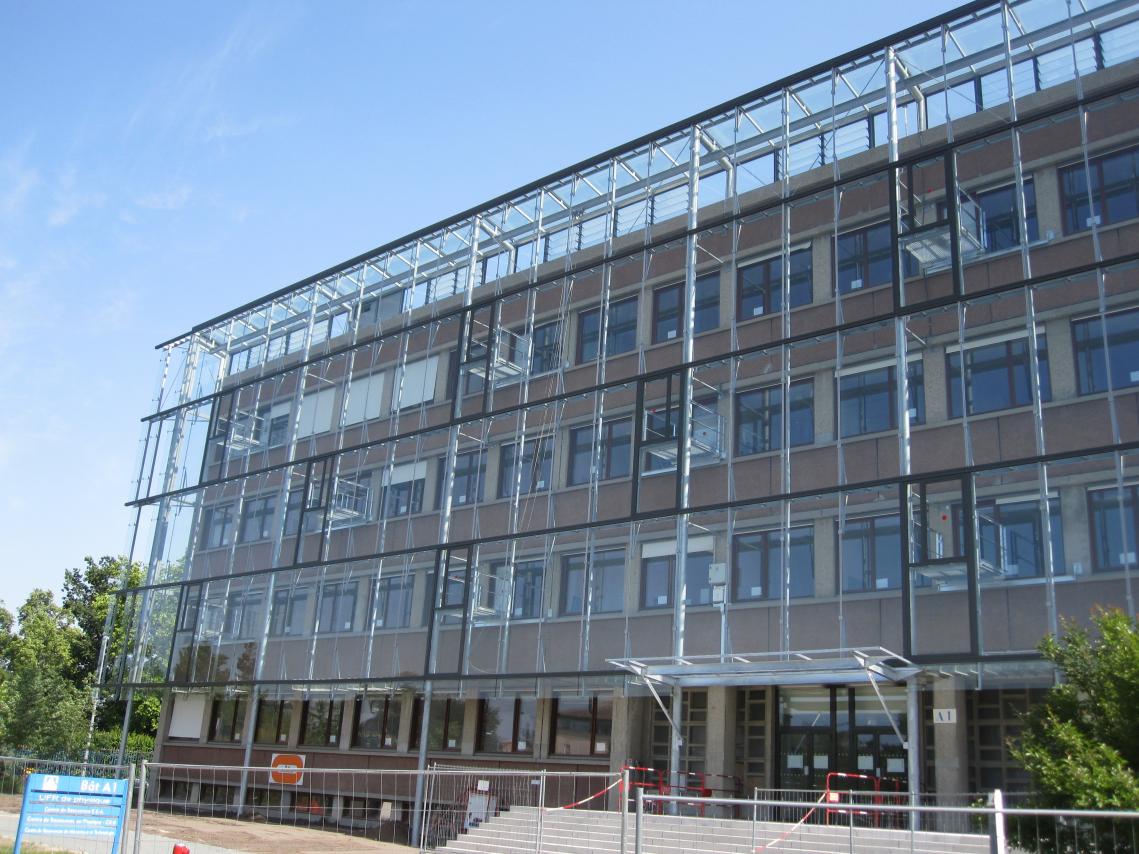
Franck Boutté Consultants
http://franck-boutte.com/Structural work / Structure - Masonry - Facade
Bioclimatic facade is a glass facade fitted with louvers at the top and bottom to create a bioclimatic space around the existing building. The technical solution developed the University of Bordeaux seeks a "soft" intervention on the building. We like to say that for this performance (reducing heating requirements by a factor of 5 to 10, primary energy consumption ≤ Cep Cep ref -40 % within the meaning of thermal regulations) we do not change the building but the climate that surrounds it, and the seasons. Instead of changing the building according to the terms of environmental regulatory, bioclimatic skin turns cold climate near the surrounding when it's hot and warm when it's cold. And the buffer space created between the glass skin and the existing façade allows energy performance and occupant comfort. In addition to maintaining the large openings of the buildings without reducing their surfaces, we make generous natural light in all classrooms while renewing the interior comfort without changing the medium.
In winter, the new glass facade absorbs solar radiation and can heat passively the interior of the building. Thus, it constitutes a buffering space around the building. In summer, this front facade opens up and down and creates an air-draft. The air set in motion around the building naturally cools and ventilates interior spaces.
This bioclimatic process is possible thanks to a greater use of modelling tools and climate engineering in all phases of the project. These help to qualify the architectural features while ensuring the quality of atmospheres offered to occupants. These tools take a full part in integrated design processes and performance requirements become a resource for design.
This device has been praised for its innovative and revealing character of the existing architectural heritage.
Construction and exploitation costs
- 6 000 000 €
- 95 000 000 €
Reasons for participating in the competition(s)
Rénovation énergétiqueLe projet présenté porte sur le développement d’une solution de rénovation énergétique des bâtiments basée sur une double-peau bioclimatique. Ce concept est actuellement en train d’être développé sur le site de l’Université de Bordeaux dans le cadre de l’opération de rénovation de 6 bâtiments d’enseignement et de recherche. Il vise la valorisation croisée entre performance énergétique et patrimoine bâti.
Le principe de façade bioclimatique est un principe évolutif au cours de l’année : il est adaptatif, il évolue avec le climat. Nous aimons dire que pour obtenir les performances suivantes (réduction des besoins de chauffage d’un facteur de 5 à 10, consommation en énergie primaire Cep ≤ Cep réf -40% au sens de la réglementation thermique) nous ne changeons pas le bâtiment mais le climat qu'il environne, et ce au fil des saisons. Au lieu de changer le bâtiment pour le convertir à des conditions d'ambiance réglementaires, la peau bioclimatique transforme son climat proche en l’environnant de froid quand il fait chaud, et de chaud quand il fait froid. L’espace tampon ainsi créé entre la peau vitrée et la façade existante permet la performance énergétique et le confort des occupants. En plus de conserver les larges ouvertures des bâtiments sans diminuer leurs surfaces, nous faisons pénétrer généreusement la lumière naturelle dans l’ensemble des salles d’enseignement tout en renouvelant le confort intérieur sans en changer le support.
Building candidate in the category





